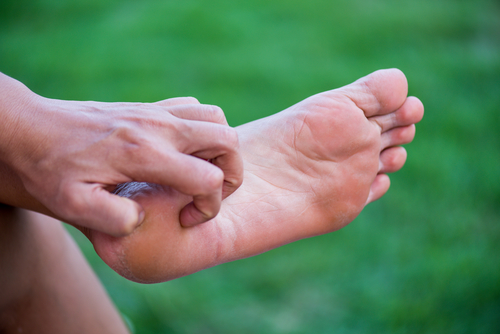
What Dermatologists Want Patients to Know About Athlete’s Foot
Despite the name, athlete’s foot is one dermatological condition that doesn’t just affect athletic individuals. In fact, research estimates the fungal infection impacts up to one in four people at any given time. Given this high prevalence, Asheboro Dermatology & Skin Surgery Center in North Carolina encourages patients of all backgrounds to learn how to prevent, identify, and treat this condition. To help raise awareness, these dermatologists highlight a few important facts you should know.
A Simple Guide to Athlete’s Foot
What Causes the Condition?
Also known as tinea pedis, athlete’s foot is caused by the tinea fungus—the same parasitic fungus that causes jock itch and ringworm. The fungus tends to develop in humid conditions, such as in locker rooms and saunas. People often contract the fungus by wearing damp socks, walking barefoot in public areas, or sharing items with another person who has the fungal infection.
 What Are the Signs?
What Are the Signs?
Typically, the first sign of athlete’s foot is cracked, itchy, dry skin in between the toes. As the infection spreads, it can cause the soles of the feet to peel and become red, itchy, and cracked. Some people may also develop blisters on the skin of the feet or dark, brittle toenails.
How Can You Prevent Athlete’s Foot?
Keeping your feet dry and clean by changing socks regularly and wearing breathable shoes are some of the best ways to prevent the infection from developing. It’s also smart to avoid walking barefoot in public gym areas or swimming pools. If someone in your household has a fungal infection, avoid sharing clothing, bedding, and towels until the problem is treated.
Are There Any Risks of Athlete’s Foot?
Given that tinea fungus can spread extremely easily, untreated athlete’s foot often leads to fungal infections elsewhere on the body. The condition may also lead to a more serious infection among people with compromised immune systems—such as those with diabetes.
How Do You Treat Athlete’s Foot & When Should You See a Dermatologist?
Most cases are effectively treated with over-the-counter antifungal creams, sprays, powders, and soaps. However, if the problem worsens or does not get better with over-the-counter treatments, see a dermatologist. They can test the skin to determine if the problem is due to a fungal infection or another type of condition.
If you need professional care for athlete’s foot, call Asheboro Dermatology & Skin Surgery Center serving Randolph, Davidson, and Moore counties for more than 20 years. These specialists have the expertise needed to properly diagnose fungal infections and prescribe the most effective skin treatments for the problem. Visit them online to learn more about their approach to comfortable care. If you’d like to schedule an appointment, call (336) 625-8410 to reach the Asheboro office, (910) 673-8410 for the West End location, or (336) 475-8410 for the Thomasville facility.
